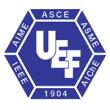Interactive workshop that combines presentations to set the stage and breakout sessions to discuss and identify what worked and what needs improvement for teaching K-12 on a virtual platform. The workshop and educational resources were supported by the United Engineering Foundation. The full report...

Module 1: Ready… Set… Capillary Action!
Level: Third Grade to Fifth Grade (approximately ages 8-11)
Capillary action is an important property in nature that can be observed in our bodies and everyday household materials. In these experiments, we are showing how capillary action works to drive fluids upwards against gravity through small channels.
Module 2: Sugar-Coat This!
Level: Sixth Grade to Eighth Grade (approximately ages 11-14)
The module walks the audience through the science behind the enteric coated pills or tablets that are designed to prevent cases related to stomach irritation. The presenters will describe the differences between enteric coated and non-coated pills when placed under pH conditions mimicking the stomach (acidic) and lower intestines (neutral). Afterwards students will be presented with safe, household solutions such as flour, sugar, corn starch and vegetable oil to create their enteric coating. Then, students will place their designed enteric coated pills into solutions mimicking the acidic environment (stomach) and neutral (lower intestines). Observations will be made up to 15 minutes, where comparisons are made in relation to the coated pills and their respective pH environments.
Module 4: Pumping into the Future!
Level: Ninth Grade to Twelfth Grade (approximately ages 14-18)
In this module students will be given the task to design and build their own small scale pump systems while learning about how pump efficiency can greatly decrease energy consumption within chemical plants. Students will choose how to connect the pipes within the pump system and take measurements on the flow rate of the exiting streams. These results can then be compared for the various pump designs to determine how velocity and pressure is affected by branching pipes.
Module 5: Self-Inflating Balloon Challenge
Level: Ninth Grade to Twelfth Grade (approximately ages 14-18)
In this module, students work as process engineers for the company Balloon Inc. which designs self-inflating balloons. Using a reaction of citric acid and baking soda, students will produce CO2 to fill their balloon (ziplock bags). First, students use mass balances to determine the starting materials they will need to fill up their first sandwich-bag-sized balloon writing down the assumptions and calculations they used. They will then perform the reaction inside a sandwich bag to create their balloon before being put into teams. Once in teams, the students will learn what each member did, figure out what worked best, and scale their reaction up to produce a gallon-bag-sized balloon.
Disclaimer
The American Institute of Chemical Engineers (AIChE) presents these resources for the education and enrichment of the public. AIChE has made best efforts to assess these resources for safety and suitability for public demonstration. AIChE is not responsible for the use or misuse of these materials. In no event shall AIChE, its officers, employees, affiliates, or other representatives be liable for the results or any loss or damage stemming from this use or misuse. The user of these resources accepts any legal liability or responsibility whatsoever for the consequence of any use or misuse. By downloading these materials, you agree to abide by these terms.
